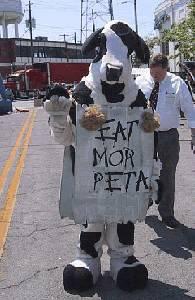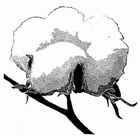Not dead
We had about fifty points on Saturday afternoon, which meant no work for the rest of the weekend. Out of about 8,000 acres of cereal crops we put in, we had about thirty acres left to strip. Not bad. We've still got about 100 tonnes of hay left to bring in, but it should be o.k. I did fairly much nothing over the weekend except sleep, I feel pretty good now. The sorghum and dry planted cotton will like the drink, the irrigated cotton is probably getting a little bored with it by now, but shouldn't come to any harm.
There appears to be some confusion about the weather/climate around here, so I'll try to describe it briefly for you.
If you look at a map of Australia that has the state borders marked on it you will see that the eastern half of the border between New South Wales and Queensland follows a couple of rivers, while the western half of the border is an arbitrary straight line. I am just to the north of the straight line about 160km west of the rivers. For reasons I am yet to explore, it is called the Maranoa. It is flat - the nearest hill over a hundred feet high is at least a three hour drive away, which doesn't make for exciting motorcycling. It is dry - since 1922, this farm has averaged 16.4" of rain per annum. It doesn't snow here, although we do get subzero temperatures on winter nights now and then. It gets a bit warm in summer, with temperatures of 40° (104° in the old money) plus the norm. A bit too warm for cotton, really - the plant shuts down above about 35° but hey, our yeid averages would still break records in America. Pretty bloody good for here, too.
The natural vegetation is mostly fairly short, thick scrubby looking trees like Coolibahs, Dogwoods and whitewoods with the occasional stands of Wilga and Ironbark, with an under layer of every vicious breed of spiky plant known to man - burrs of every variety being dominant (except nagoora burr, don't see much of that away from the cotton).
There appears to be some confusion about the weather/climate around here, so I'll try to describe it briefly for you.
If you look at a map of Australia that has the state borders marked on it you will see that the eastern half of the border between New South Wales and Queensland follows a couple of rivers, while the western half of the border is an arbitrary straight line. I am just to the north of the straight line about 160km west of the rivers. For reasons I am yet to explore, it is called the Maranoa. It is flat - the nearest hill over a hundred feet high is at least a three hour drive away, which doesn't make for exciting motorcycling. It is dry - since 1922, this farm has averaged 16.4" of rain per annum. It doesn't snow here, although we do get subzero temperatures on winter nights now and then. It gets a bit warm in summer, with temperatures of 40° (104° in the old money) plus the norm. A bit too warm for cotton, really - the plant shuts down above about 35° but hey, our yeid averages would still break records in America. Pretty bloody good for here, too.
The natural vegetation is mostly fairly short, thick scrubby looking trees like Coolibahs, Dogwoods and whitewoods with the occasional stands of Wilga and Ironbark, with an under layer of every vicious breed of spiky plant known to man - burrs of every variety being dominant (except nagoora burr, don't see much of that away from the cotton).




2 Comments:
Sounds like Arizona...
And I do understand both systems, Imperial & Metric...
Everything in the US Army is metric because of NATO & SEATO
Glad to see you back posting again, I've missed you. (in a purely platonic way, I'm no pufta!)
Nato and Seato should get together - that'd be neato.
Post a Comment
<< Home